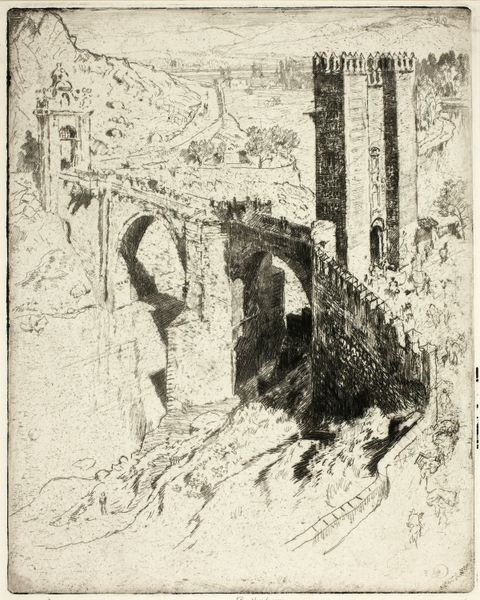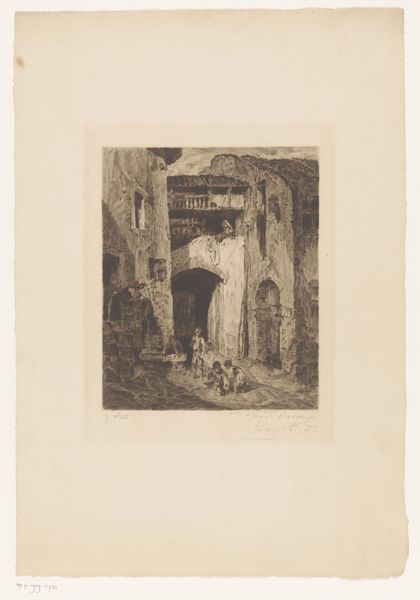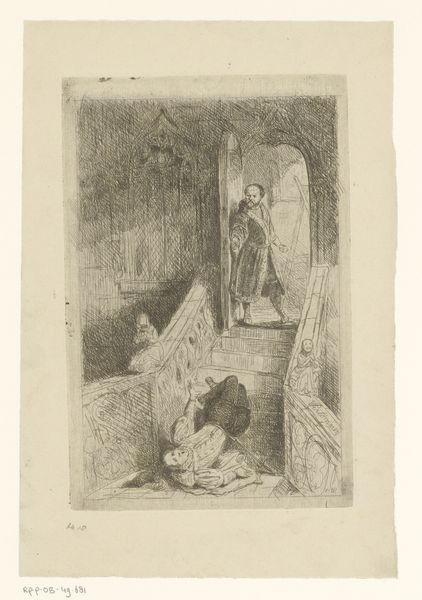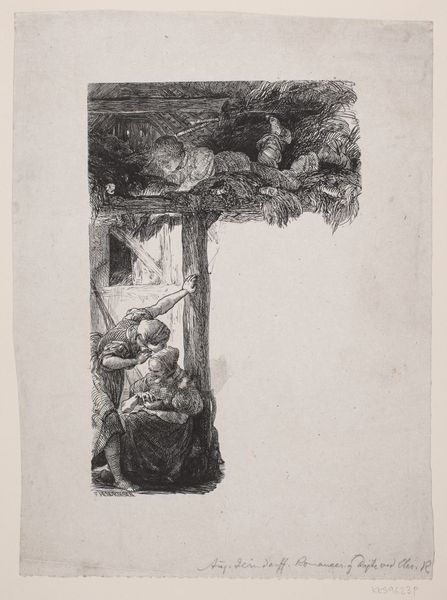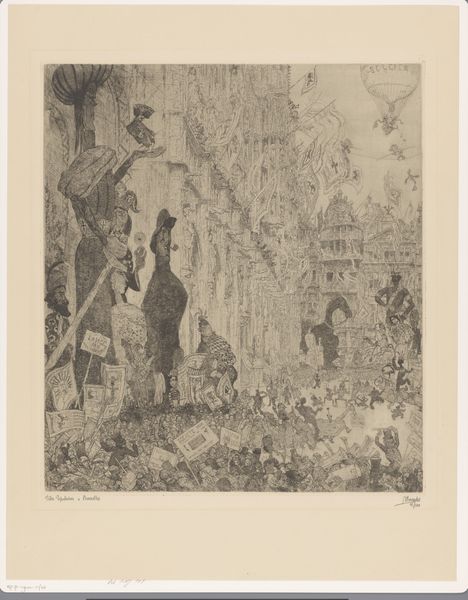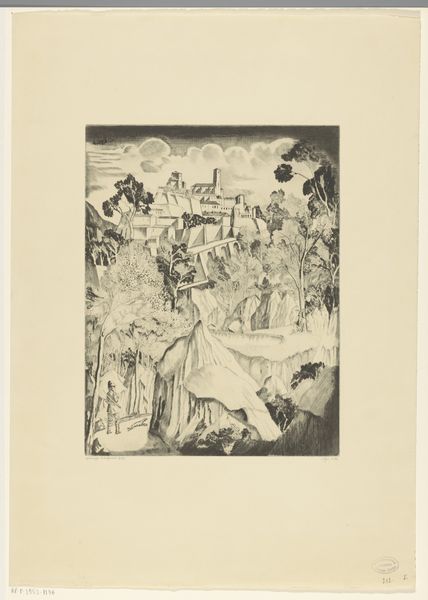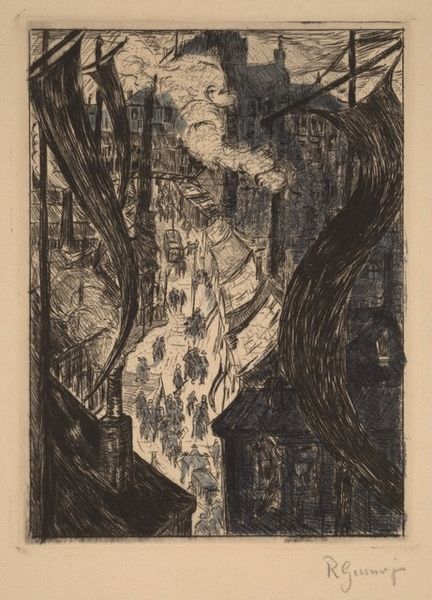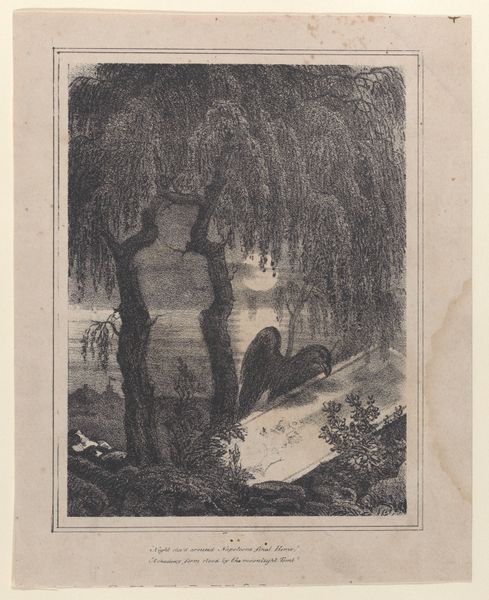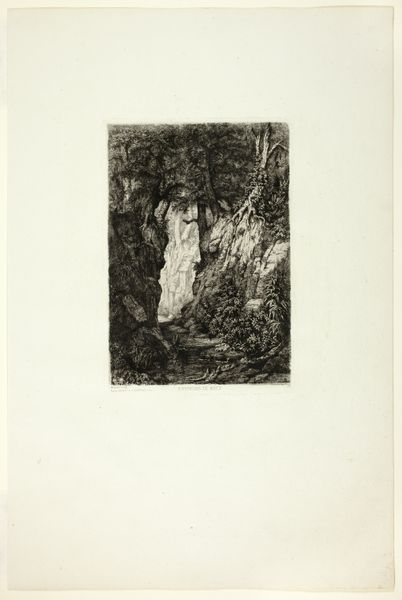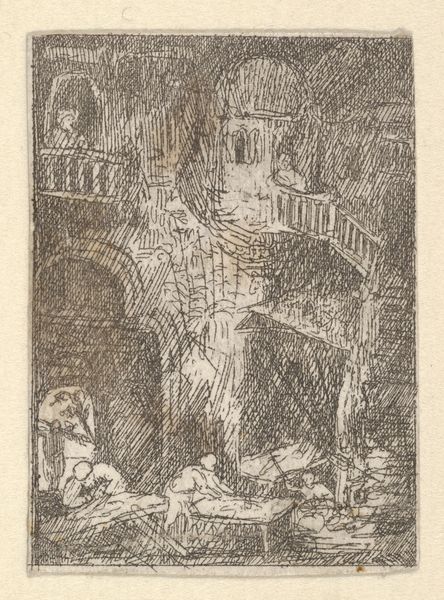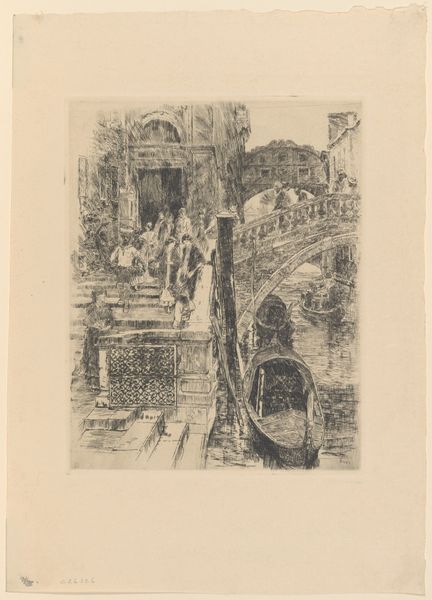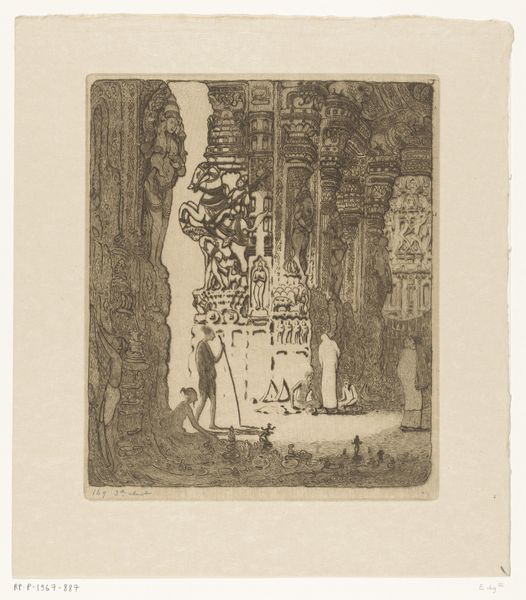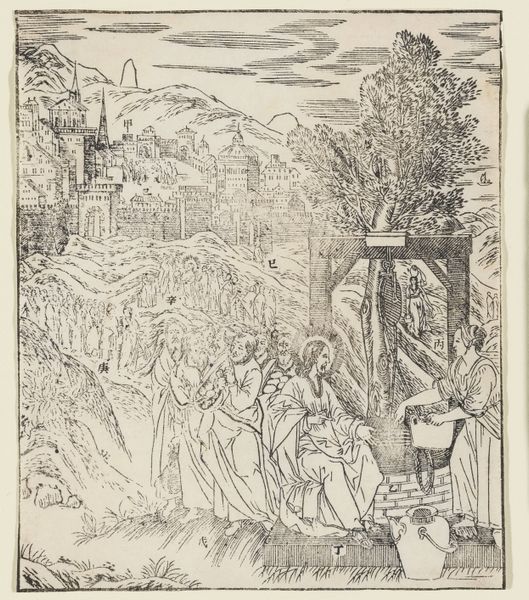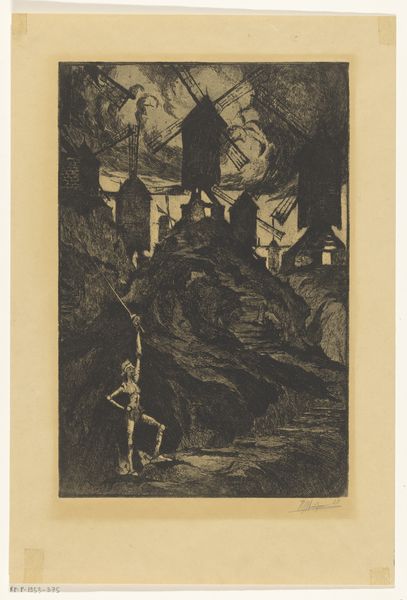
drawing, print, etching, paper
#
drawing
# print
#
etching
#
landscape
#
etching
#
paper
#
cityscape
Dimensions: 345 × 251 mm (sheet); 253 × 201 mm (image)
Copyright: Public Domain
Curator: Look at this etching by Joseph Pennell, dating to 1904. It’s titled “The Bridge of Alcantara, Toledo.” Editor: My first impression is the texture—that almost frantic, energetic scratching. It gives the whole scene a precarious, dreamlike quality, like a fading memory etched onto paper. Curator: Pennell was deeply interested in capturing the monumentality of architecture and its place within the evolving urban landscape. The Bridge of Alcantara held significant cultural and historical weight in Toledo, a city itself symbolic of Spain's complex past. Pennell seems to want to convey this grandeur but also hints at vulnerability. Editor: Yes, and vulnerability particularly with respect to rapid modernisation. The etching technique really brings out those tensions—the bridge seems both solid and insubstantial. This reminds me of writings by Doreen Massey, about how urban spaces hold multiple histories that are etched, one way or the other, upon people's memories of a place. I wonder how the citizens felt when witnessing the transition in the early 20th century? Curator: That’s an interesting angle. The choice of subject certainly points to Pennell's romantic gaze, framing Toledo's ancient architecture, but it also reflects a larger narrative around European identity at the turn of the century, caught between progress and preservation. The etching process itself—the careful manipulation of the plate— mirrors that tension. Editor: Absolutely. You can see Pennell strategically deploying light and shadow, creating this play between the monument's structural strength and an encroaching darkness. The lines on that massive tower almost feel like prison bars! To that end, what choices are made in producing an art work for consumption in public galleries, like The Art Institute? What narratives are either emphasized, or erased through choices of inclusion and exclusion? Curator: Those questions are central, especially in considering how institutions shape perceptions. Looking closely, Pennell's bridge is not just a beautiful object but a symbolic stage on which we project cultural anxieties and historical narratives. I'll carry these considerations with me after our discussion, thank you! Editor: And for me too! Viewing it now feels different, I am starting to interpret more than initially presented to me, in relation to issues of societal and political power at play in urban development, rather than architectural history in isolation.
Comments
No comments
Be the first to comment and join the conversation on the ultimate creative platform.
